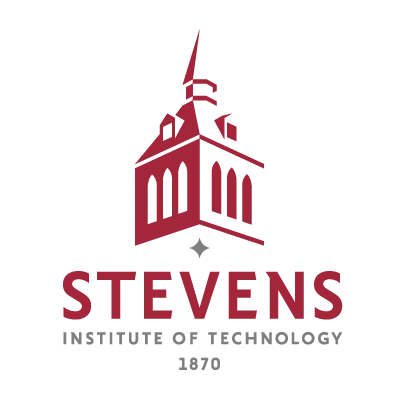Big Data Jobs: Skills You’ll Acquire in a Data Science Master’s Program

Many people pursue careers in data science after reading articles proclaiming that salaries in the field are sky high and that the job market is red hot. Both assertions are true, but what provocative headlines fail to mention is that there’s nothing easy about becoming a data scientist. Successful data scientists are well paid and courted by employers because they have a unique set of interdisciplinary skills related to programming, complex mathematics, statistics and problem-solving. But acquiring those skills is no small feat.
It takes formal education - 90 percent of data scientists have advanced degrees - plus practical experience. It also involves continuous self-study, because data science is a rapidly evolving field. Automation, Natural Language Processing, intelligent machines and Federated Learning are just the latest advancements in a discipline defined by disruptive technology. Even seasoned data analysts may have trouble bridging the skills gap, contributing to a shortage of Big Data talent.
THE IMPRESSIVE NATURE OF DATA SCIENCE STUDENTS
StevensOnline's M.Eng. in Applied Data Science program attracts domestic and international students with academic backgrounds and professional specializations in data analytics, data visualization, business intelligence, business analytics, information technology, information systems, computer science, and statistical mathematics. While some enroll in the online program because they want to transition into data science, others pursue this degree to further advance in analytics careers or learn how to leverage the vast quantities of data generated in their professional spheres.
StevensOnline gives aspiring data scientists everything they need to get exactly what they want out of graduate school.
Many prospective M.Eng. in Applied Data Science students already work in data science or related roles and, though it's not a prerequisite, are proficient in:
- Multivariable calculus
- Linear algebra
- Probability theory
- Programming languages like Python, R and MATLAB
Becoming a data scientist requires sophisticated technical skills, advanced mathematical and computational skills, and a commitment to innovation. A successful career in data science is a commitment to lifelong learning, which is why data science salaries are so high.
SKILLS THAT LEAD TO JOBS IN DATA SCIENCE
Stevens' future-focused interdisciplinary M.Eng. in Applied Data Science curriculum prepares students to thrive in data science careers in settings as diverse as fintech, academia, healthcare and government. Core courses are laser-focused on skills that employers seek in data scientists:
- Analysis Review presents students with the principal methods of mathematical analysis, including differentiability, Riemann-Stieltjes integration, function series and Banach spaces using examples and basic applications. In data science, everything connects to foundational mathematics in some way. Many associate data science with computer science and software, but statistical mathematical analysis is also a crucial component of this discipline. The concepts taught in this core class give students the skills and knowledge they’ll need to identify patterns in data and to create functional algorithms throughout their careers.
- Linear Algebra is the sub-field of mathematics that forms the foundation of machine learning. Without it, there’s no way to implement algorithms in code. This core course, which is geared toward students already familiar with basic linear algebra, reviews the main concepts of linear algebra and its applications in data science. Students develop the skills to understand and manipulate data effectively, and the coursework prepares them for careers in data science specializations like Natural Language Processing, Dimensionality Reduction and Computer Vision.
- Probability Theory is a branch of mathematics dealing with uncertainty and statistical inference. Data scientists use concepts borrowed from Probability Theory - such as combinatorial probability, cumulative distribution functions, conditional distributions and independence, and the Central Limit Theorem - to analyze random events and make predictions about the likelihood of future outcomes. Students in this course learn to analyze data that is hard to scrutinize using traditional deductive analysis.
- Statistical Methods covers topics such as data collection, data analysis, experiment design and hypothesis testing. Students are trained on statistical software using real-world datasets throughout the course, and group projects walk them through each phase of a professional statistician’s work. Data scientists are, by their nature, statisticians. They may use different tools and look at different data types, but their job is to leverage statistical methods to derive meaningful insights from information. By the end of the term, students have the skills and knowledge necessary to see how Big Data fits into the big picture.
- Numerical Linear Algebra covers advanced techniques for deriving and implementing algorithms in the context of Big Data. Students learn to understand structured and unstructured high-dimensional data in terms of linear algebra algorithms. The course also develops and improves coding skills in Python and MATLAB. Students learn about the latest ways data scientists use applied linear algebra to solve real-world problems. Understanding numerical linear algebra applications is essential for data scientists who want to specialize in machine learning and deep learning.
- Advanced Optimization Methods covers subgradient calculus for non-smooth convex functions, optimality conditions for non-smooth optimization problems, and conjugate and Lagrangian convex duality. Students learn new approaches to numerical methods for non-smooth optimization and how to solve large-scale optimization problems.
- Applied Machine Learning introduces machine learning theory, algorithms and applications, through decision tree learning, neural networks, Bayesian learning and reinforcement learning. Throughout the course, students apply algorithms to real-world business and organizational problems. This hands-on experience is vital. Not all data scientists use machine learning, but it probably won’t be long before applied artificial intelligence is a standard part of the data science toolkit.
- Deep Learning (DL) is a powerful machine learning method that lets computers tackle once-problematic data types, like vision, speech and text. Deep learning can teach computers to recognize, organize and analyze a broader range of data. Sentiment analysis, medical diagnostics, marketing automation and law enforcement are just a few applications for deep learning. This course covers theories of machine learning, deep learning tools, computer vision and natural language processing. Students apply their knowledge to real-world machine learning challenges in DL coursework and homework.
- Dynamic Programming is among the techniques data scientists use to solve reinforcement learning problems (or problems related to configuring actions for maximum reward). Dynamic programming algorithms differ from other algorithms in that they expressly assume the input model is ideal. This course positions dynamic programming as the most popular methodology for learning and controlling dynamic stochastic systems and explains why. Students learn about basic models of dynamical systems, finite-horizon stochastic problems and infinite-horizon stochastic models of fully or partially observable systems. Coursework introduces approximate dynamic programming techniques like tree-based methods for classification and Bayesian learning in various applications.
- Natural Language Processing (NLP) is an innovation in machine learning that allows data scientists to use unstructured information - like written text and spoken conversations - that doesn’t fit neatly into traditional relational databases. NLP scrutinizes hard-to-manipulate data by training computers to recognize the deeper meaning of phrases, sentiments and tone. NLP has already made it possible to leverage the data in emails, videos, customer service logs, web searches and more. As more industries find ways to leverage natural language processing, data scientists need to know NLP to remain relevant.
- Database Management Systems helps M.Eng. in Applied Data Science students develop skills related to the design and querying of data management systems, so they don't have to rely on machine learning engineers or data engineers. Data scientists can sometimes get away without knowing their way around database management systems, but they'll never be as efficient or as effective as those who can use data mining and tools like SQL.
- Time Series Analysis teaches students how data points are indexed in chronological order and added to sequences in equally spaced intervals - and how they’re applied in finance, economics, the physical sciences and the social sciences. There are different tools and methods for analyzing time series data because it can behave in ways that violate conventional statistics. Students learn about the scope and applications of time series analysis and exploratory data analysis methods in this course. They also explore specific topics related to time series analysis in different fields, like the unit-root problem in economics and forecasting and testing for market efficiency in finance.
- Distributed Systems use groupings of individual computers to address one significant problem. Networked devices in multiple locations share the workload. Cloud computing, on the other hand, uses remote networked servers to complete several tasks (usually for multiple organizations). M.Eng. in Applied Data Science students at Stevens learn to design and implement distributed and cloud systems and fault-tolerant applications in distributed environments. Coursework covers protocol design, models of distributed systems and methods of replication for fault tolerance. Given how quickly distributed systems and the cloud replace traditional in-house networked systems, it won't be long before data scientists work with the former more often than with the latter.
WHY THE MASTER’S IS A MUST-HAVE CREDENTIAL IN DATA SCIENCE
Competition for open data science positions is fierce. More highly trained data scientists exist today than when LinkedIn reported in 2018 that 150,000 jobs for data scientists would go unfilled. The master's has become the entry-level data science degree, and employers expect to see an M.Eng. in Applied Data Science on your resume as proof positive that you have the hard and soft skills to turn information into actionable insights. Bachelor's degrees, boot camps, certificate programs and MOOC sequences are no longer sufficient to break into this field - especially now that innovations like Natural Language Processing, intelligent machines and Federated Learning are rapidly changing the data science landscape.
WHY STEVENSONLINE?
The Charles V. Schaefer, Jr. School of Engineering & Science's online M.Eng. in Applied Data Science lets highly motivated professionals study and complete assignments from anywhere - and at almost any time. Stevens students complete just 1.5 hours of synchronous (live) class work per week per course. The rest of their time is spent in asynchronous (self-paced) courses and doing homework, research and project work, allowing them to fulfill the core M.Eng. in Applied Data Science requirements while working full-time - maximizing the ROI of the M.Eng. in Applied Data Science tuition.

